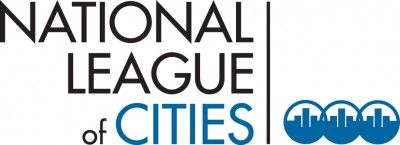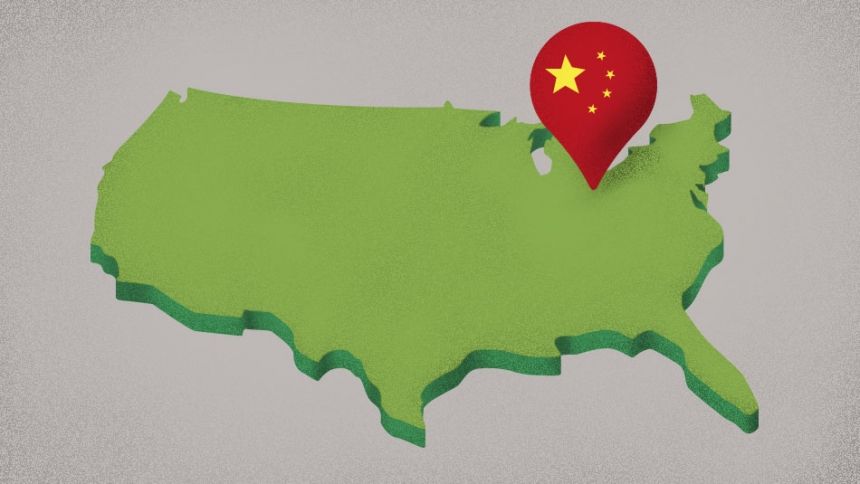The National League of Cities Center for Research and Innovation has joined with Next American City to explore how cities are developing innovative models for tackling complex urban issues and strengthening their local economies. In the coming weeks NLC will feature a series of case studies on foreign direct investment, fiber connectivity, and immigration.
The first of these is adapted from a Forefront story written by Nancy Scola on foreign direct investment in Toledo, Ohio.
Two Terracotta Army soldiers guard the Grand Ballroom of downtown Toledo’s Park Inn, where inside Mayor Michael Bell gamely takes photo after photo with waves of potential Chinese investors. Outside, in the foyer, the mood is festive. Shrimp is piled high around a striking ice dragon, and from the bar Budweisers, Coronas and Tsingtaos flow.
Eight months in the works, the next two days of the Five Lakes Global Economic Forum will be chock full of welcome speeches, seminars on U.S. business practices, luncheons, site visits and trips to the new Hollywood Casino. Representatives from area real estate, construction and energy firms, as well as local governments, mingle with their counterparts from Chinese firms like Youbo Pharmaceuticals and Shijiazhuang Datang Pump Industry Company.
To forum’s goal is to attract Chinese foreign direct investment to northeastern Ohio and Toledo in particular, a struggling city looking for a way through tough economic times. Selling the Chinese on this corner of Ohio is finding some success, but also generating doubts.
“Believe it or not, I never thought about living in Toledo a couple years ago,” says Taiwanese-born Toledoan Zhixin “Simon” Guo, a local businessman and matchmaker in a dark suit, glasses and combed-back hair, as speeches begin. “People ask me, ‘You know, Simon, why did you choose Toledo? Why not San Diego or somewhere else?’
“I always quote the expression in Chinese which goes, You don’t really know how beautiful the mountains are because you’re right in the middle of them.” Guo switches to Chinese. “You can have a good life here, raise your family here, and earn lots of money.”
Toledo is hardly alone among American cities in wanting to attract some of what Chinese citizens are investing abroad. Overlapping the Five Lakes session, for example, the Alabama-China Partnership is holding a symposium for investors in tiny Monroeville, a region that boasts pretty landscapes and low labor costs. Just a week earlier, U.S.-China Investment Week events were held in Milwaukee, Orlando, Washington, D.C., Portland, Los Angeles and Dallas. Texas Gov. Rick Perry attended the gathering at Cowboys Stadium; the dinner gala guest of honor was George W. Bush.
Toledo, though, believes it has a leg up. Even if the relationship between Toledo and its Chinese connections is still in the getting-to-know-you stage, both sides have already invested three years into it.
While the mood inside the Park Inn is exceptionally upbeat, outside questions abound and come in many forms.D. Michael Collins, an independent on the City Council, points out that the legislature played no real role in the forum. U.S. Rep. Marcy Kaptur, a Toledo Democrat, cautions that it’s difficult fully grasp who your business partners are in communist China. Meanwhile, on the airwaves here in the swing state of Ohio, Mitt Romney and Barack Obama are battling over who’s toughest on China, while Romney surrogate and Ohio Gov. John Kasich’s privatized economic development program is intimately involved in the China forum.
But at the forum, hope triumphs. It is that Toledo — an hour southwest of Detroit, hard hit by the poor economy, stung by a rash of foreclosures and a shrinking manufacturing base — can help eager foreign investors see in and around their city the partnerships they might form, the plants they might buy, the real estate in which they might invest.
And, in doing so, Toledo might help get itself back on its feet.
If that hope turns into reality, other cities will likely look to what’s happening in Toledo as a model for how to go from sharing Tsingtaos in a conference hall to reinventing downtowns using international capital.
An American Mayor Looks Abroad
Mayor Bell, 57, in his dark suit, purple tie and cowboy boots, still looks much like the University of Toledo football player he once was. And it’s a good thing — there’s a lot riding on his broad shoulders.
Elected in 2009 by a slim margin, Bell, a political independent, says he came into office with a $48 million deficit (though critics dispute that figure) and the city in a precarious state. To pass through the recession, he says, “we just needed a bridge.”
Part of that bridge came in the form of foreign investment in the spring of 2011, when the city sold two long-available sites on the Maumee River: The Docks, a restaurant strip that went for $2.5 million, and a 69-acre parcel in the Marina District that went for $3.8 million that had once meant to be the home of an amphitheater and more but was now desolate. The buyer: Dashing Pacific Group Ltd., a partnership between two Chinese investors, Yuan Xiaohong and Wu Kin Hung.
Later, the 350-room Park Inn itself was sold for $3 million to an undisclosed Chinese investor.
Locals aren’t delusional. “If someone wants to be in New York, L.A. or San Francisco,” says Paul Zito of the Regional Growth Partnership (RGP), a privately-led and Toledo-based economic development group, “there’s nothing we’re going to do to talk them out of it.”
But open minds will hardly find Toledo a cultural wasteland. The city celebrates its Toledo Museum of Art, founded in 1901 by Edward Drummond Libbey, who moved his New England Glass Company west in the late 1880s. He was attracted, according to the museum’s catalog, “by cheap natural gas, good sand for making glass, and a strategic location on rail and shipping routes.”
What appealed to Libbey is, in fact, still at the heart of Glass City’s pitch.
On opening night, the University of Toledo plays a video that showed maps of the tremendous spidering out of transportation connections from Toledo across the Midwest: Ship routes to Lake Erie, railways, highways (Interstates 80, I90, I75) and the nexuses between then.
The location’s appeal is obvious. If you make and distribute things, it makes sense to at least consider making and distributing them from Toledo. Booms the UT video’s voiceover, “close to 40 percent of the U.S. population and 50 percent of the Canadian population is open, reachable, and ready for the taking.”
In the past, says Bell, local leaders were unprepared to sell the area’s merits. But more than that, in the area’s sometimes contentious political environment, they were unwilling to row in the same direction.
“What we weren’t doing was functioning as a region,” says Bell, who argues that what’s good for, say, nearby suburban Perrysburg (population: 21,000) is good for Toledo. Now, representatives all the way up from Toledo to Lucas County and the State of Ohio are “sitting in the same room” as deals are being pursued. And at the forum itself, the mayor of Perrysburg is in attendance, and sessions are sponsored by the city of Sandusky (population: 25,000), some 60 miles away, as well as rural Erie County in which it sits.
That good will is, with great deliberateness, being extended to their would-be Chinese partners. “We realize that everything starts with a relationship and a friendship,” says Bell. In the hotel hallway, a delegation from the city of Hangzhou (population 6.2 million) approaches the dapper Bell with a gift: An embroidered tie, a symbol of the city. “Xie xie,” says Bell without hesitation. “Xie xie,” Thank you.
Bell adds, as Guo translates, that one nice thing about city Toledo’s size — 286,000 people and declining — is the ease in getting face time with the mayor.
But when it comes to the Dashing Pacific deals, Bell has been criticized for relying too heavily upon assumed goodwill and trust rather than deep vetting.
The mayor rejects the critique. “If I look at other companies that have come here from other countries, nobody requires that from them,” says the mayor. “We’ve taken it as far as we’ve done for other countries. But all of the sudden that’s not far enough, because this is China? I’m not playing that game.”
Besides, Bell’s staff points out, Dashing Pacific deposited full payment into city coffers, in cash, on the days the waterfront deals closed.
As I leave, I flip over the business card that Bell has given me. On the back, the mayor of Toledo’s contact information is rendered in Chinese.
Setting the Groundwork for Investment
What’s taking place on the ground in Toledo is the product of both a carefully crafted local network and sweeping economic policy decisions made over the last decade some 6,600 miles away in Beijing.
Flush with foreign cash, since 1999 China has aimed at increasing its foreign direct investment, or FDI, under a policy known as “Go Out.” Chinese FDI was $4 billion in 1990. In 2010, it had climbed to $298 billion. Add to the mix that U.S. real estate went bust in the last half-decade while Chinese prices have remained high, “Made in the U.S.A.” has retained its cachet, and China’s economic outlook is mixed.
It’s unsurprising, FDI experts say, that Chinese business people are closely studying the U.S., looking for distressed properties and other chances to invest here — or that U.S. cities and towns are eager to channel some of it their way.
But understanding how we ended up in the Park Inn Grand Ballroom requires scrolling back the tape three years.
When Bell was still a candidate for mayor, he was pitched on the merits of China by a local Asian-American group. Later, a local real estate developer, a friend of then-deputy mayor Dean Monske, lived next door to an executive from a major Toledo-originating engineering firm that was enthralled by China but finding the business world there difficult to navigate.
Everyone in China’s business world, conveys Monske, who now heads RGP, “has three or four business cards.”
Fast forward, and the developer meets Simon Guo, the businessman who kicked off the forum, and is soon enough showing him around Toledo. Guo falls hard for the Ohio city, and moves his family there. Guo, who knows the pair behind Dashing Pacific, helps shepherd the Docks and Marina District deals.
The mayor recalls Guo saying outside at meeting at the Docks that Toledo was such a lovely place, Had he thought about marketing it in China?
If times were better, says the mayor, he might not have thought twice. But the city was in a hole. “Why not,” he says, “go and find out what it’s all about?”
Bell and Monske flew to China. “It was a two-hour dog-and-pony show,” says Monske. “Every mayor, every governor is traipsing off to China but it’s a middle person that is trusted on both sides that can make things happen quicker,” he says. For Toledo, that was Guo. Three more trips have since followed. “We’ve shortened the ability to build a relationship,” says Monske, “from 10 years to 10 months.”
But the challenges of navigating a new business culture isn’t limited to China.
While in China, the state is involved, often deeply so, in arranging investments (“Today is the beginning of the relationship between CIPA” — that is, the Chinese government’s investment promotion wing — “and Toledo,” promises the Ministry of Commerce’s Sun Wansong, on opening night), in the U.S., the public sector generally plays a more hands-off role, and often behind the scenes,
Partly as a result, getting Chinese firms past the start-up phase in the U.S. can be difficult, particularly for small companies, says Linda Dawson, director of Asian projects with the Grant County (Indiana) Economic Growth Council, without the guidance they would get in China. Especially with smaller firms, there can be “confusion over employee and employer relationships,” safety regulations, says Dawson. They might “need help understanding the pitfalls of incorporating their business.”
In Toledo, government engagement comes from not only the mayor’s office, and those of other municipalities, but also more indirectly the Regional Growth Partnership, one of the six development groups that carry out Gov. Kasich’s plan to privatize economic development, called JobsOhio.
At the forum, RGP’s Zito, their vice president of International Development, conducts an afternoon session called “Differences in Doing Business in the USA.”
Zito’s plan is to walk the crowd through their options for getting started in the States. License their goods to U.S. firms? Hire a local sales rep? Go in on a joint venture? Or go all in on starting up a subsidiary here on the ground in Ohio?
But before that, Zito begins by disabusing the attendees of some of the wrong ideas they might have about the American market. This isn’t the Wild West. Nor is it one giant unified market. Oh, and also, money here doesn’t grow on trees. Not anymore, at least.
Made by China, In the USA
China aside, opinions swirling around Toledo differ on whether foreign direct investment is the way, or even a way, to set the city right again. For Curtis Milhaupt, a professor at Columbia Law School and author of the 2008 report “Is the U.S. Ready for FDI from China?” it’s clear. “History suggests that foreign investment is, on balance, a very, very positive thing for local economies.”
In practice, that engagement can take many forms. In the media room at the Park Inn, Chinese and American businessmen are huddled to discuss the possibility of applying advanced waste technologies perfected in the U.S. market to China’s burgeoning landfill industry. (An invitation is extended to visit Shenzhen. I’ve just recently been, says the local.)
And upstairs, dozens of cerebrovascular surgeons and other interested parties are gathered to discuss planned clinical trials on Shuxuetong, a traditional Chinese stroke vaccine made from earthworms and leeches, part of a new partnership between Youbo and the University of Toledo Medical Center. “It’s the number-one killer in China,” says Dr. Mouhammad Jumaa of UT’s acclaimed stroke center. “That’s what I learned today.”
From a labor perspective, the AFL-CIO Industrial Union Council’s Bob Baugh says while he has no existential problem with Chinese companies doing business in the U.S., each investment must be parsed for whether it might realistically produce good sustainable jobs for American workers, and not simply transfer ownerships to foreign firms.
For her part, Congresswoman Kaptur questions the very premise that foreign direction investment, in general, holds value for Toledo and cities like it, arguing that America abdicates some of its wealth-production capacity when it imports, rather than home grows, its investments.
Looking at Toledo, though, others see reason to be particularly wary of investment from China, or at least duly diligent and deliberate.
“There’s capital and there’s capital,” says Kaptur. “And if it’s dirty capital, one would have to be very careful.” Moreover, set just south of Lake Erie, The Docks and Marina District’s strategic locations raise “defense-related issues.”
The congresswoman’s concerns are echoed by those who study foreign direct investment. “It’s not unreasonable for there to be some suspicion about Chinese investments in the United States,” says Columbia’s Milhaupt. Wariness might be politically motivated, but it’s also prudent.
Two weeks after the Toledo conference wraps, the U.S. House Intelligence Committee will raise red flags on the Shenzhen-based telecommunications companies Huawei and ZTE’s connections to Chinese government, and President Obama will block a Chinese-owned firm’s purchasing of an interest in wind farms near an Oregon naval weapons training facility.
Ken Davies’ specialty is in consulting with Chinese companies looking to do business in the U.S. He says he encourages them to bolster their reputations by focusing on making high-quality products, engaging in good labor practices and being a constructive member of the community.
If practiced by a few anchor companies, says Davies, the goodwill can spread to Chinese business in the U.S. in general.
An open question in Toledo is whether the city’s early experiences with Chinese investment will be that of successful anchor projects that open the door to more like them, or botched opportunities that poison the well for others.
Keith Wilkowski, a Toledo Democrat who was runner-up to Bell in the 2009 mayoral race, cautions against a city-building strategy that believes in a “cataclysmic investment” that will, once and for all, bring Toledo back.
Wilkowksi cycles through Toledo’s past supposed panaceas: The Portside Festival Marketplace abandoned six years after it was built; the Owens-Illinois Building that was left by its namesake firm in 2006; the 3-year-old, $150 million downtown Huntington Center stadium; the brand-new Hollywood Casino.
And now China is the answer to Toledo’s prayers? “It’s both harder and more rewarding than that,” says Wilkowski.
And Mayor Bell, for his part, doesn’t entirely disagree. He argues that encouraging diverse, sometimes foreign, investment in Toledo is no magic solution, but it just might be part of establishing a broad, sustainable base for Toledo’s economic rebirth.
Skepticism about that path, says John Gibney, RGP’s vice president of marketing and communications, isn’t surprising. Even those connected to and invested in the China push have their doubts. But he explains the thinking that drives the willingness to give it a shot. “A lot of things this community has been doing haven’t been working, so why not try it?”

The National League of Cities (NLC) is a resource and advocate for almost 2,000 member cities and the 49 state municipal leagues, representing 19,000 cities and towns and more than 218 million Americans. The NLC Center for Research and Innovation provides applied research and analysis, inspiration and innovative ideas and peer-learning opportunities to help city leaders tackle tough issues and improve the quality of life in their communities.

Nancy Scola is a Washington, DC-based journalist whose work tends to focus on the intersections of technology, politics, and public policy. Shortly after returning from Havana she started as a tech reporter at POLITICO.
















